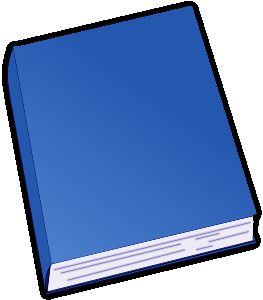A Concise Dictionary of Middle English From A.D. 1150 to 1580 By: A. L. (Anthony Lawson) Mayhew (1842-) |
|---|

A Concise Dictionary of Middle English From A.D. 1150 to 1580 by A.L. (Anthony Lawson) Mayhew offers a comprehensive and invaluable resource for scholars and enthusiasts interested in the Middle English period. This dictionary successfully bridges the language gap between Old English and Early Modern English, enabling readers to delve into the rich linguistic tapestry of a significant historical era.
Mayhew's work stands out for its meticulous attention to detail and scholarship, making it an essential tool for researchers and students alike. The concise nature of the dictionary is an asset, providing a trim yet comprehensive compilation of Middle English words, demonstrating their evolution, usages, and various forms. This aspect allows for easy reference and quick navigation, making it accessible to both seasoned experts and beginners.
One admirable feature of the dictionary is Mayhew's impressive organization of the entries. The easy-to-follow structure, with words listed alphabetically, facilitates a smooth search process. Moreover, each entry includes detailed explanations, providing readers with a clear understanding of the word's meaning, its historical context, and its usage in various literary works of the time. This level of contextualization is particularly helpful for readers seeking to grasp the intricacies of Middle English literature and history.
Mayhew's dictionary is not just a compilation of words and definitions; it also includes a wealth of supplemental material. Appendices on pronunciation, grammatical forms, and sources of Middle English texts serve as valuable reference points, helping readers engage more deeply with the language and culture of the era.
While the dictionary amply fulfills its primary purpose as a reference tool, it could benefit from a more visually engaging layout. The lack of illustrations or examples of Middle English script can make the dictionary seem somewhat dry. Incorporating visual aids or examples of manuscripts would greatly enhance the reader's experience by providing a visual context to the words and making the dictionary more visually appealing.
Despite this minor concern, A Concise Dictionary of Middle English From A.D. 1150 to 1580 remains an authoritative and comprehensive reference work. Mayhew's dedicated research and linguistic expertise shine through, providing readers with a reliable tool for exploring the intricate linguistic landscape of the Middle English period. Whether used as a companion to Middle English literature or as a stand-alone resource, this dictionary will undoubtedly prove invaluable to anyone seeking to unravel the linguistic nuances and cultural heritage of medieval England. This text is intended for users whose text readers cannot use the "real" (Unicode/UTF 8) version of the file. Characters that could not be fully displayed have been "unpacked" and shown in brackets; Greek words are shown in transliteration between marks. [Gh] [gh] (yogh) [oe] [´æ] (oe ligature, æ with accent) [ a] [ e] ... (letters with macron or "long" mark) [)a] [)e] (letters with breve or "short" mark) Yogh is used in dictionary headwords; the others occur only in etymologies. Significant typographical errors are noted as they occur. Other errors chiefly in punctuation and abbreviations are listed at the end of the e text, along with an explanation of line end hyphens. Unless otherwise noted, words are spelled and alphabetized as originally printed. Note in particular: The letter Æ/æ is alphabetized as "ae". The letter I is alphabetized according to its phonetic value, vowel before consonant. J is not used. Thorn Þ/þ and eth ð (capital Ð does not occur) are alphabetized as "th". The letters U and V are shown with the form used in their source documents, but are alphabetized by phonetic value. A few sequences such as initial "Su " do not make this distinction. Yogh [Gh]/[gh] is alphabetized after "y". Changes given in the authors' Additions and Corrections have been made in the main text... Continue reading book >>
|
| This book is in genre |
|---|
| Languages |
| eBook links |
|---|
| Wikipedia – A. L. (Anthony Lawson) Mayhew |
| Wikipedia – A Concise Dictionary of Middle English From A.D. 1150 to 1580 |
| eBook Downloads | |
|---|---|
|
ePUB eBook • iBooks for iPhone and iPad • Nook • Sony Reader |
Kindle eBook • Mobi file format for Kindle |
|
Read eBook • Load eBook in browser |
Text File eBook • Computers • Windows • Mac |
| Review this book |
|---|